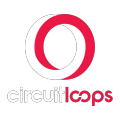Email marketing remains one of the most potent and cost-effective strategies for businesses to connect with their audience, drive conversions, and build lasting relationships. However, crafting successful email marketing campaigns requires careful planning, thoughtful execution, and continuous optimization. This comprehensive guide will explore best practices to ensure your email campaigns achieve maximum impact and deliver exceptional results.
Email Design: Captivating Visuals to Engage Your Audience
The design of your email is crucial in capturing your recipients’ attention and encouraging them to take the desired action. Here are some best practices for creating visually appealing and engaging email designs:
- Use a Clean and Mobile-Responsive Layout
- Opt for a simple and clutter-free layout to make it easy for subscribers to consume the content.
- Ensure your email design is responsive to adapt seamlessly across various devices, including smartphones and tablets.
- Incorporate Eye-Catching Graphics
- Use high-quality images and graphics that resonate with your brand and message.
- Balance visuals with concise and relevant content to maintain an excellent text-to-image ratio.
- Consistent Branding
- To reinforce brand recognition, implement consistent branding elements, such as your logo, color scheme, and typography.
Content Creation: Crafting Compelling Messages
The content of your email plays a pivotal role in captivating your audience, conveying your message effectively, and encouraging action. Here are some best practices for creating compelling email content:
- Personalization and Segmentation
- Segment your email list based on relevant criteria, such as demographics, purchase history, or engagement level.
- Personalize your content by addressing subscribers by name and tailoring the message to match their interests and preferences.
- Clear and Concise Messaging
- Craft concise, to-the-point subject lines that grab attention and communicate the email’s purpose.
- Use clear and compelling language in the email body, focusing on the main message or offer.
- Provide Valuable and Relevant Content
- Offer valuable content that resonates with your audience’s needs and interests.
- Share informative blog posts, exclusive promotions, or educational resources to engage subscribers.
Segmentation: Targeting the Right Audience with Precision
Segmentation is a powerful technique that allows you to divide your email list into distinct groups based on specific criteria. This practice enables you to tailor content to each segment, increasing engagement and conversion rates. Here are some segmentation best practices:
- Demographic Segmentation
- Divide your email list based on demographic factors such as age, gender, location, and occupation.
- Customize content to address each demographic group’s unique preferences and pain points.
- Behavioral Segmentation
- Segment subscribers based on their past interactions with your emails, website, or previous purchases.
- Send targeted emails that align with their specific interests and buying behavior.
- Customer Lifecycle Segmentation
- Categorize subscribers according to their stage in the customer lifecycle (e.g., new leads, loyal customers, inactive subscribers).
- Implement tailored email sequences for each stage to nurture leads and encourage retention.
Personalization: Forging Stronger Connections with Subscribers
Personalization goes beyond using the recipient’s name in the email. It involves creating individualized experiences that make subscribers feel valued and understood. Here are some personalization best practices:
- Dynamic Content
- Utilize dynamic content blocks to display content based on subscriber data, preferences, or behaviors.
- Personalize product recommendations, offers, or calls to action to increase relevance.
- Behavioral Triggers
- Set up automated behavioral triggers like welcome emails, abandoned cart reminders, or post-purchase follow-ups.
- These triggers engage subscribers at critical moments, increasing the likelihood of conversion.
- A/B Testing
- Conduct A/B tests to compare email variations and determine the most effective elements.
- Test subject lines, content, visuals, and calls to action to refine your email campaigns continuously.
Subject Lines: Grab Attention and Encourage Open Rates
The subject line is the first thing subscribers see, significantly influencing whether they open your email or not. Writing compelling subject lines is essential for the success of your email marketing campaigns. Here are some subject line best practices:
- Personalization
- Use the recipient’s name or location in the subject line to make it more personal.
- Tailor subject lines based on past interactions or purchase history to increase relevance.
- Clarity and Urgency
- Convey the email’s purpose and benefit concisely.
- Create a sense of urgency to encourage immediate action (e.g., limited-time offers).
- Avoid Spam Triggers
- Steer clear of spam trigger words, excessive punctuation, and excessive use of capital letters.
- Avoid using deceptive or misleading subject lines, which may damage your sender’s reputation.
Call-to-Action Optimization: Driving Conversions with Effective CTAs
The call-to-action (CTA) is the linchpin of your email campaign, as it directs subscribers to take the desired action. Optimizing your CTAs can significantly impact your conversion rates. Here are some CTA optimization best practices:
- Clarity and Visibility
- Make your CTA stand out by using contrasting colors and placing it prominently within the email.
- Use clear, straightforward language that tells recipients precisely what you want them to do.
- Single and Focused CTA
- Stick to a single, primary CTA to avoid overwhelming recipients with too many choices.
- Ensure your CTA aligns with the email’s main objective and leads to a dedicated landing page.
- A/B Test Your CTAs
- Experiment with different CTA styles, wording, and placement to identify the most effective option.
- Analyze the performance of each variation to refine your approach continually.
Conclusion
Effective email marketing campaigns require a thoughtful combination of design, content, segmentation, personalization, subject lines, and call-to-action optimization. By implementing the best practices outlined in this guide, you can create compelling email campaigns that resonate with your audience, foster engagement, and drive conversions. Remember to continuously monitor and analyze your results, adjusting your strategies to achieve even greater success in your email marketing endeavors.


Recent Comments